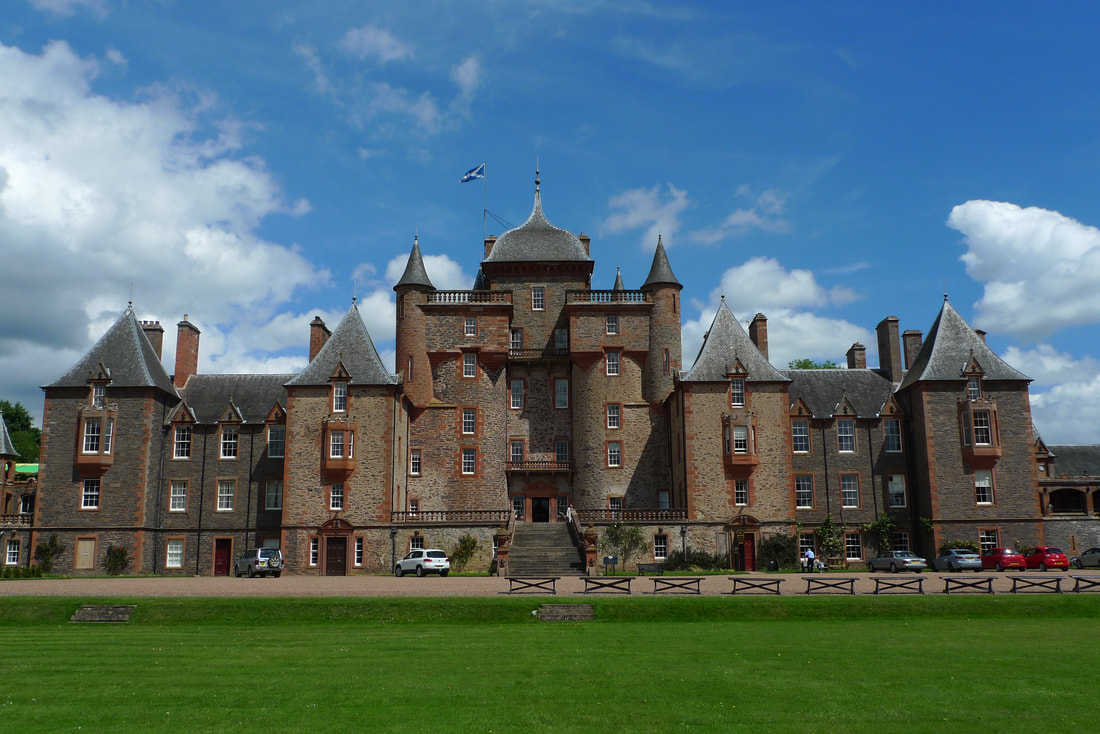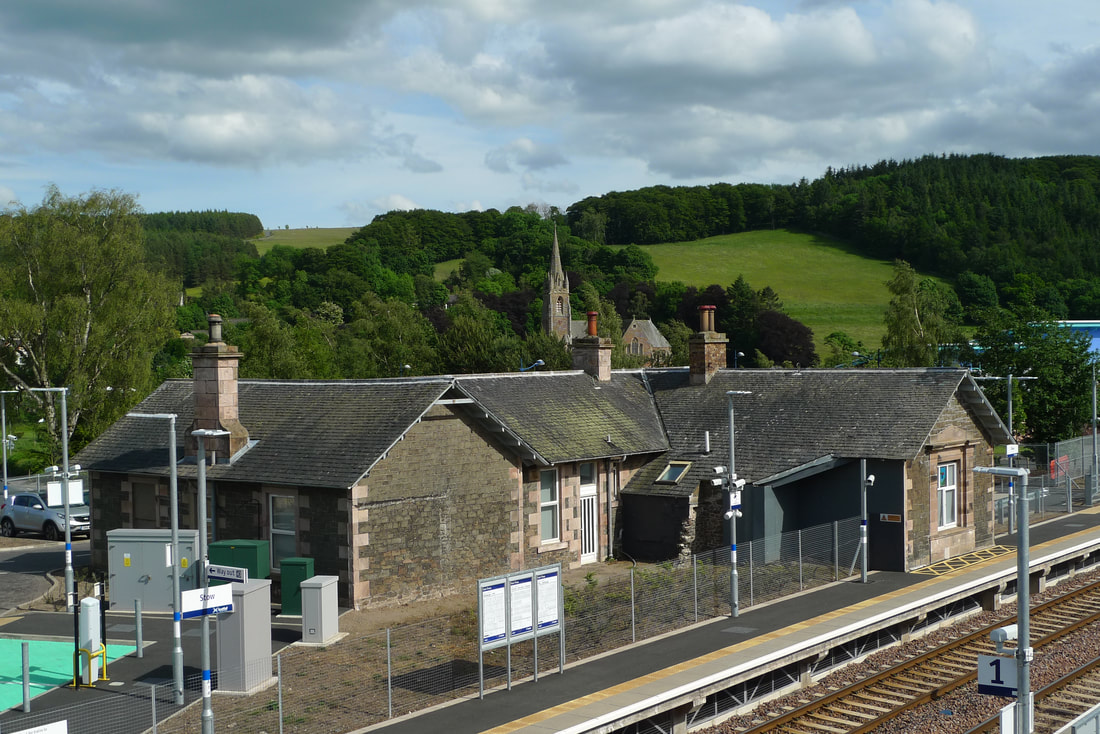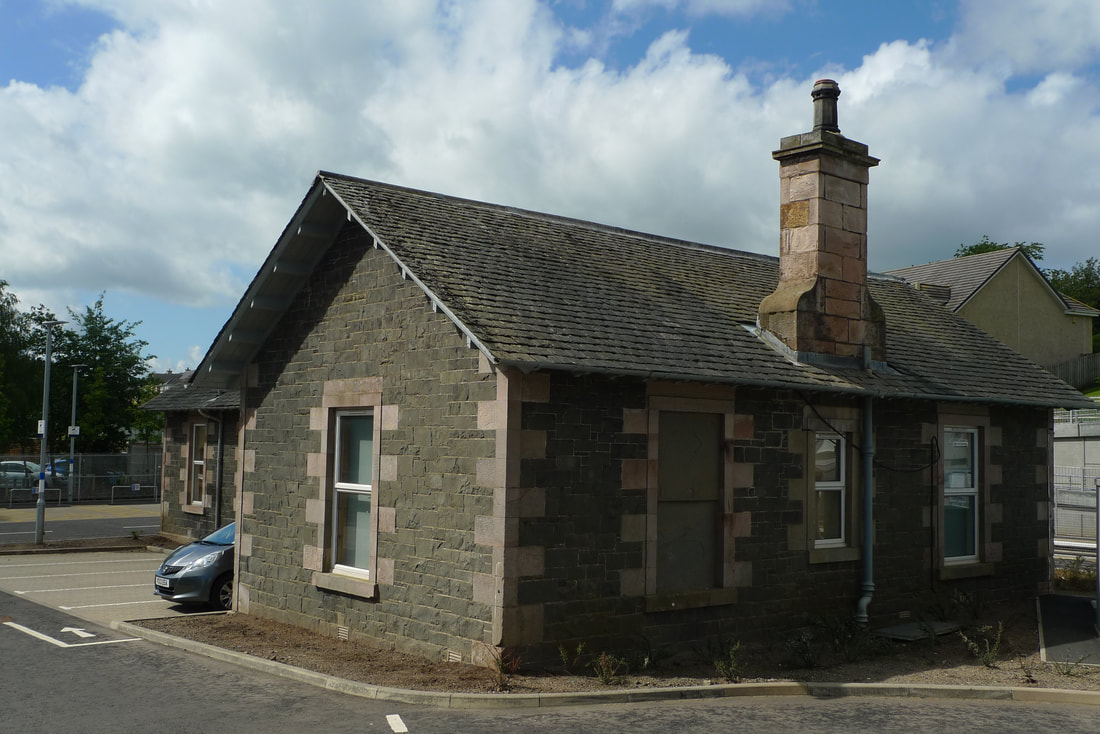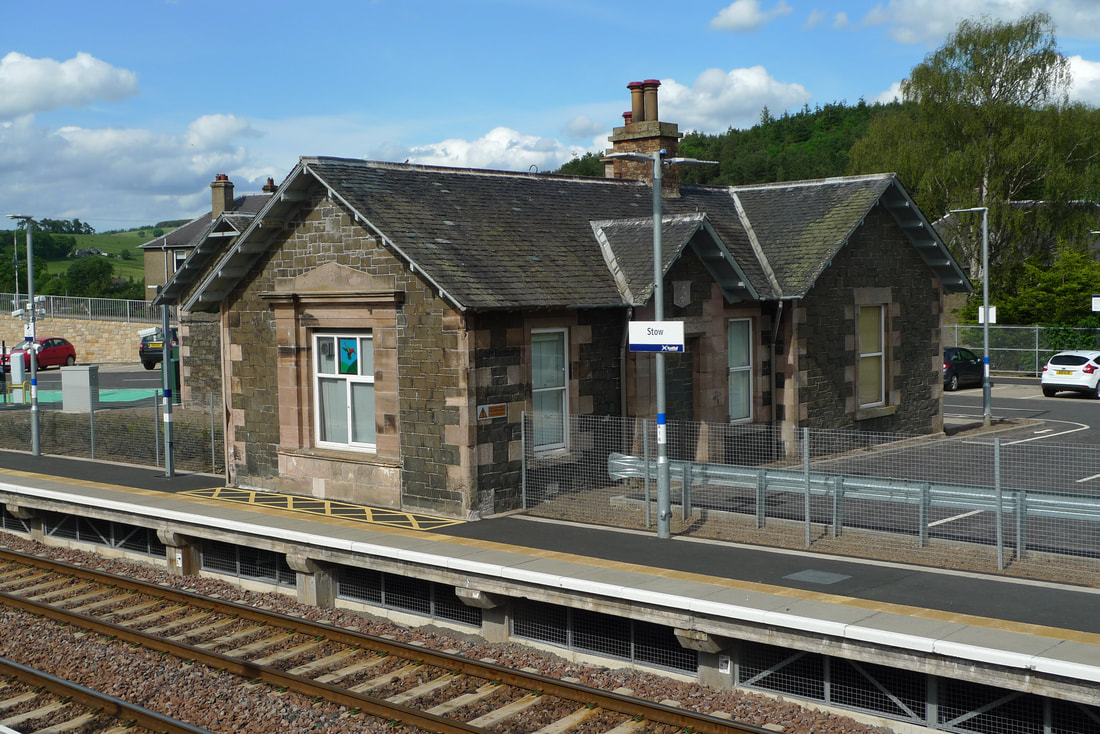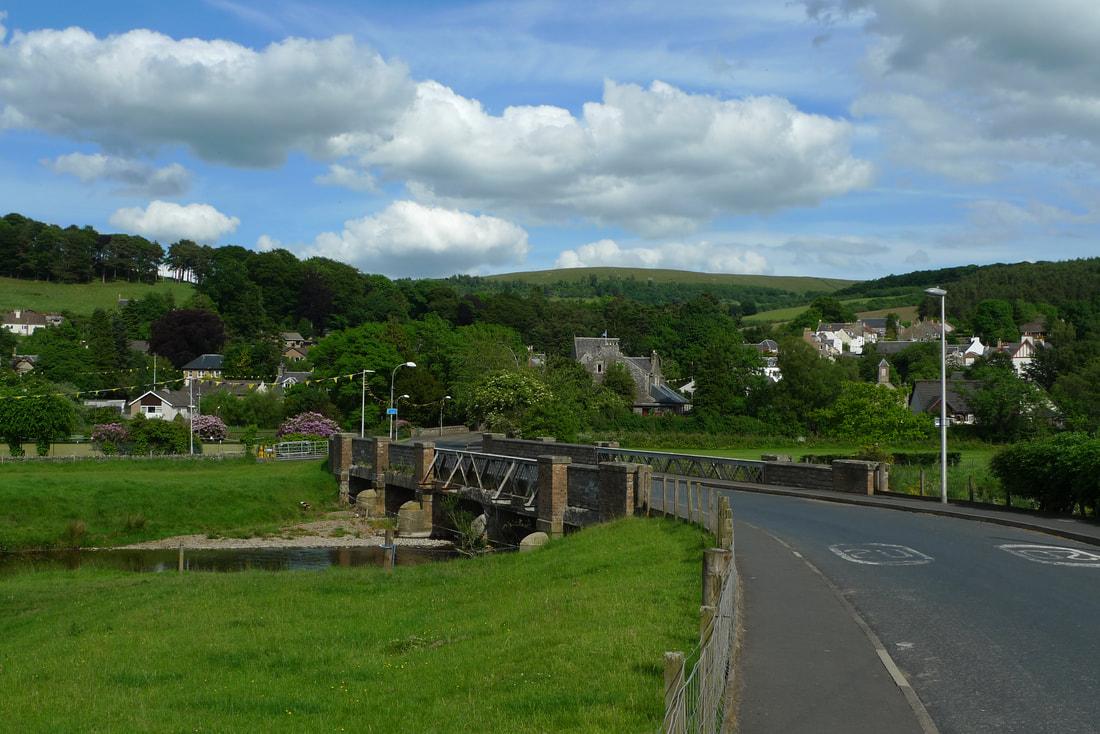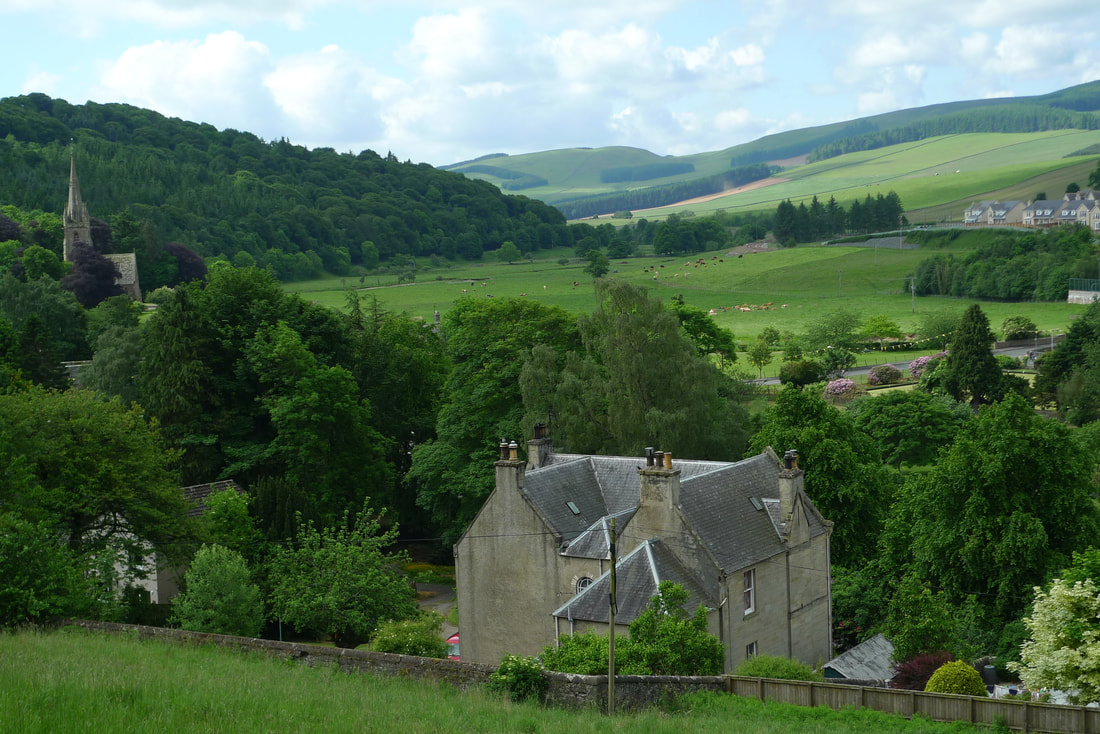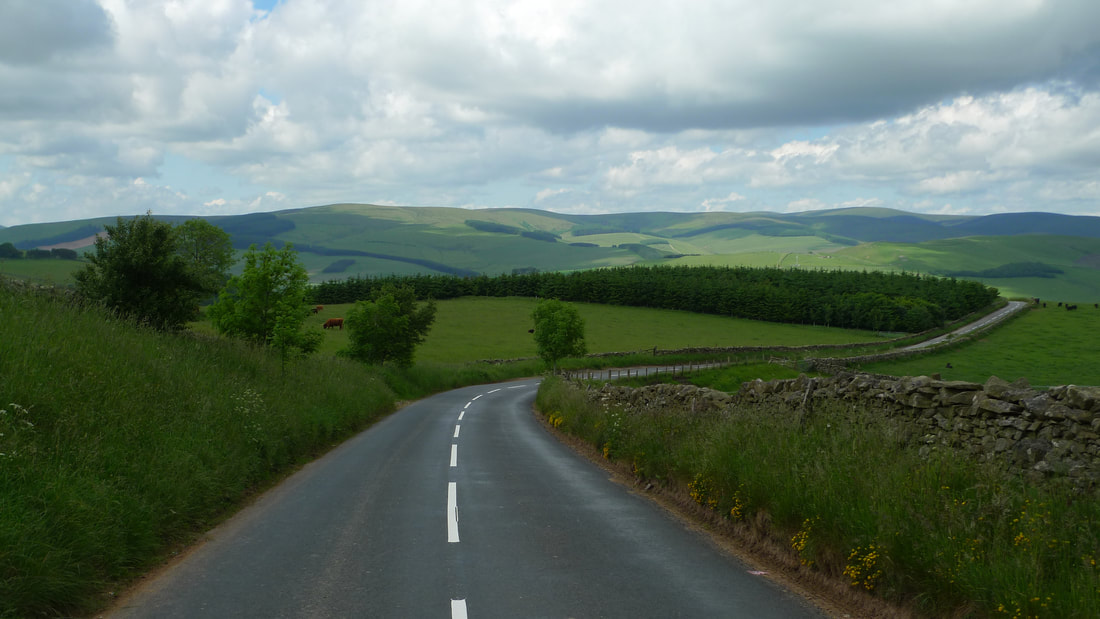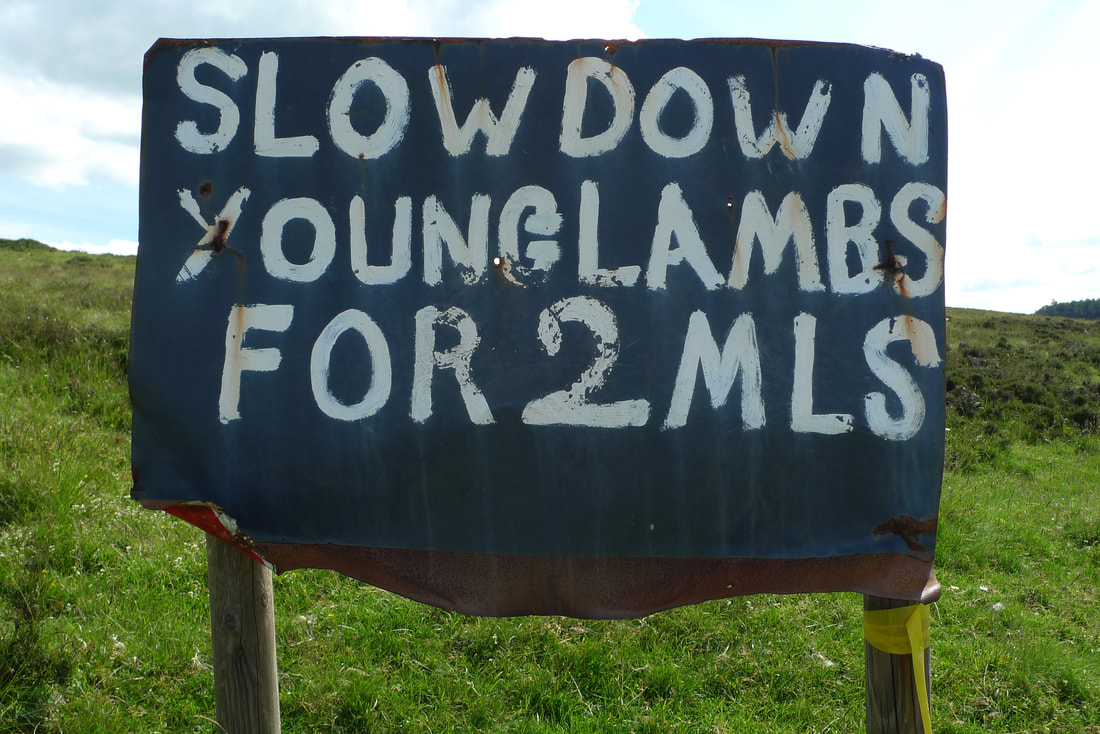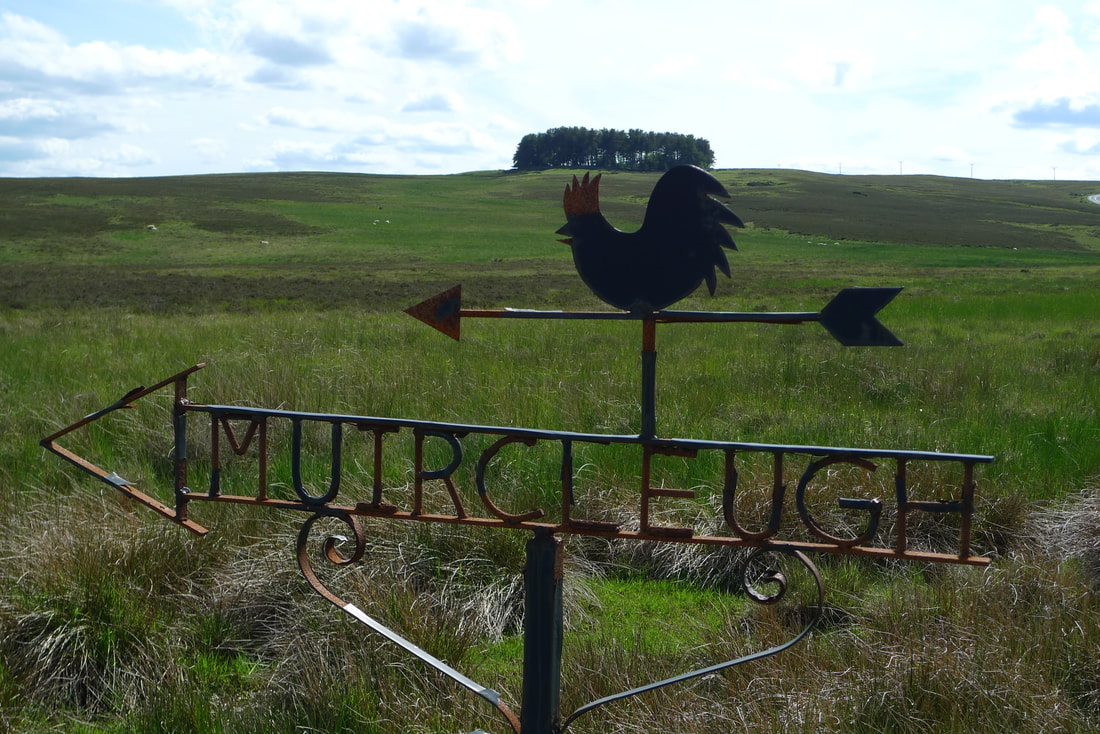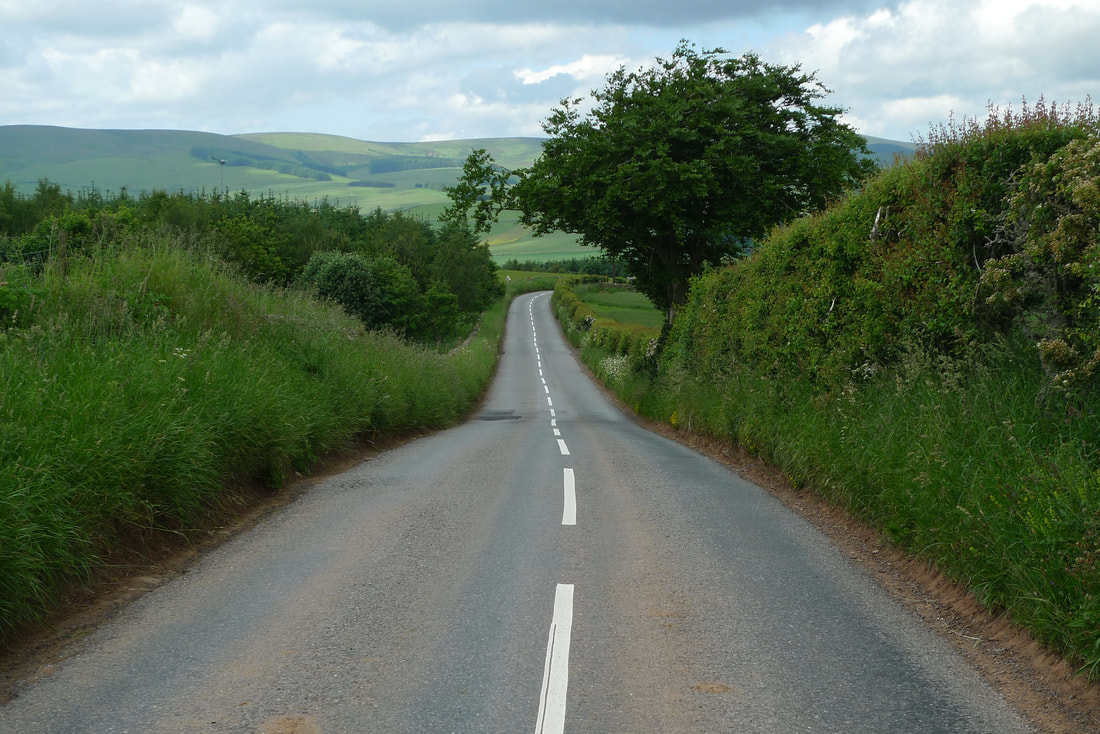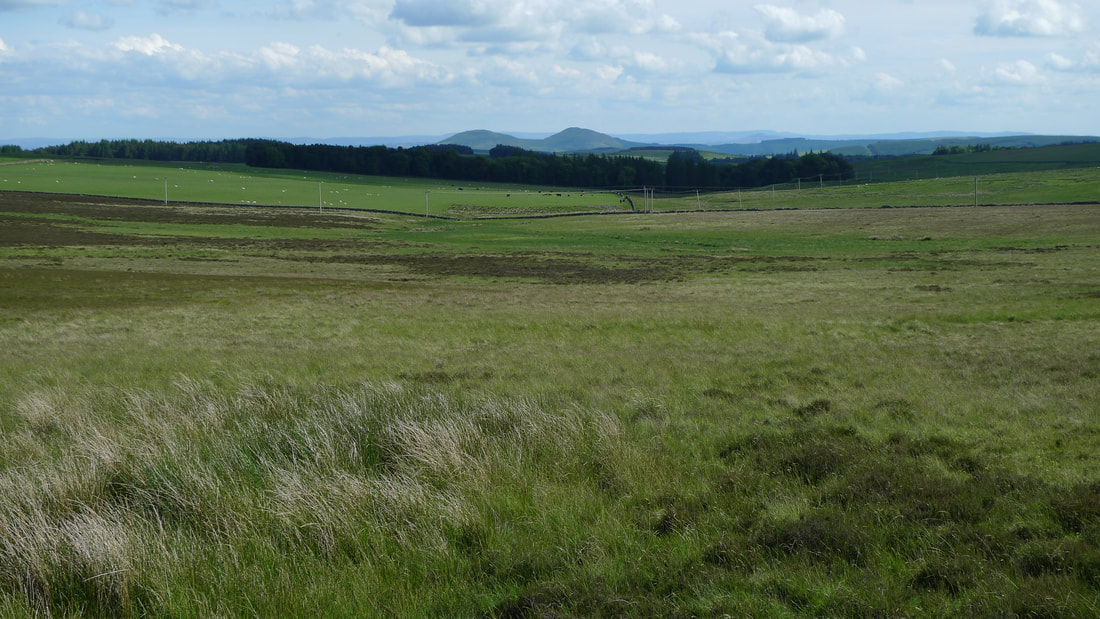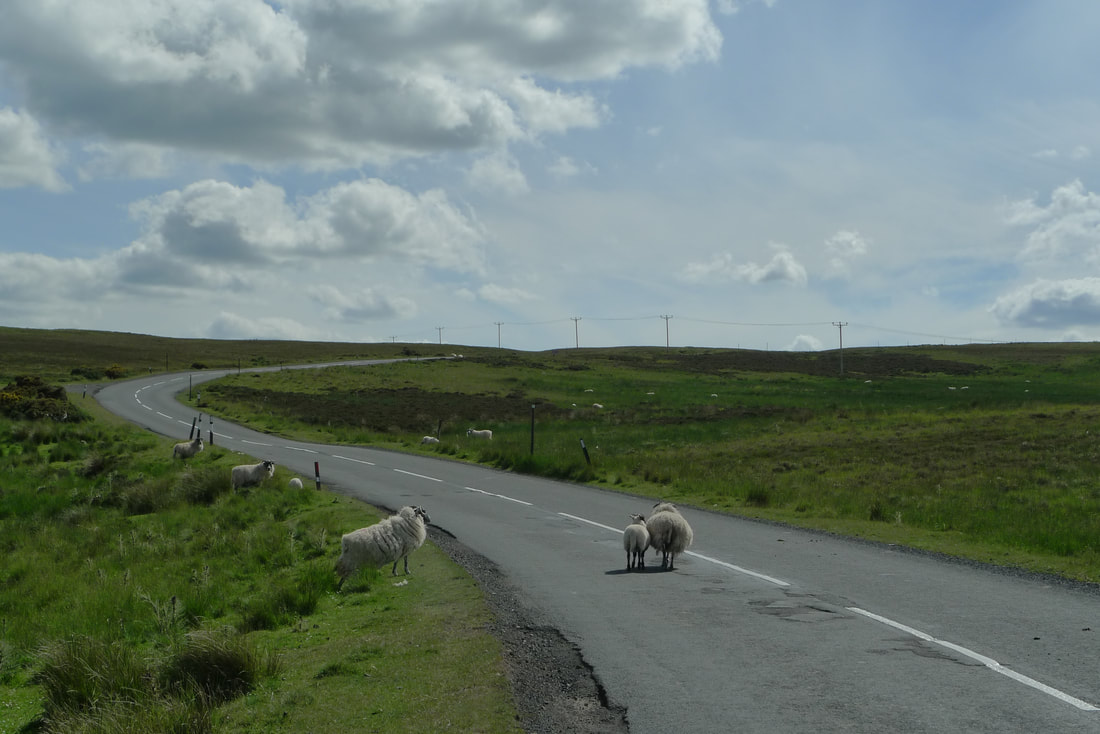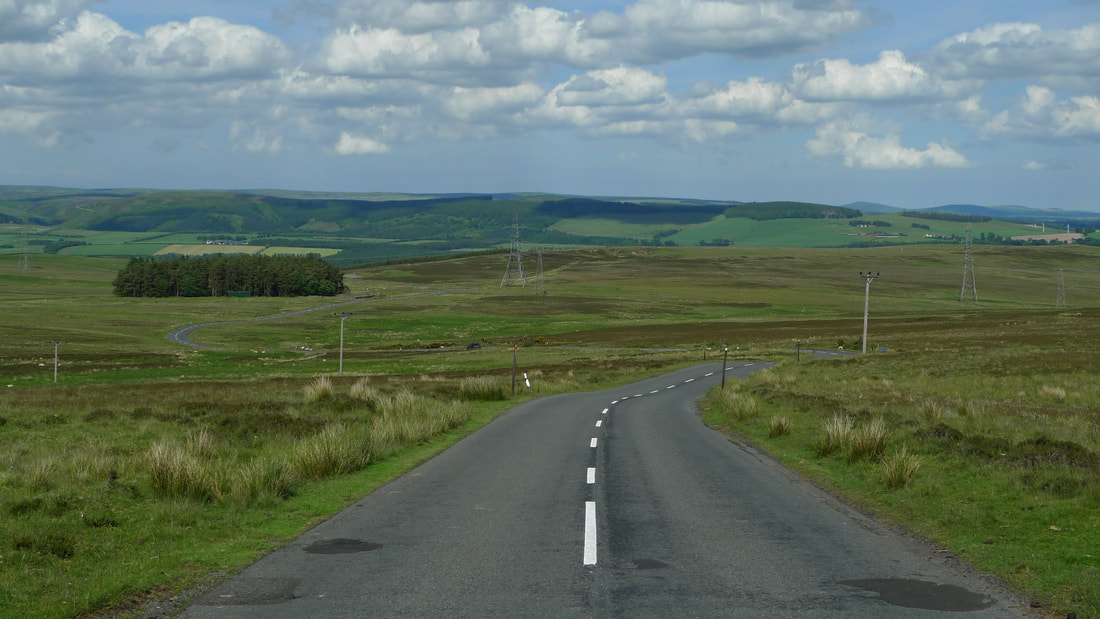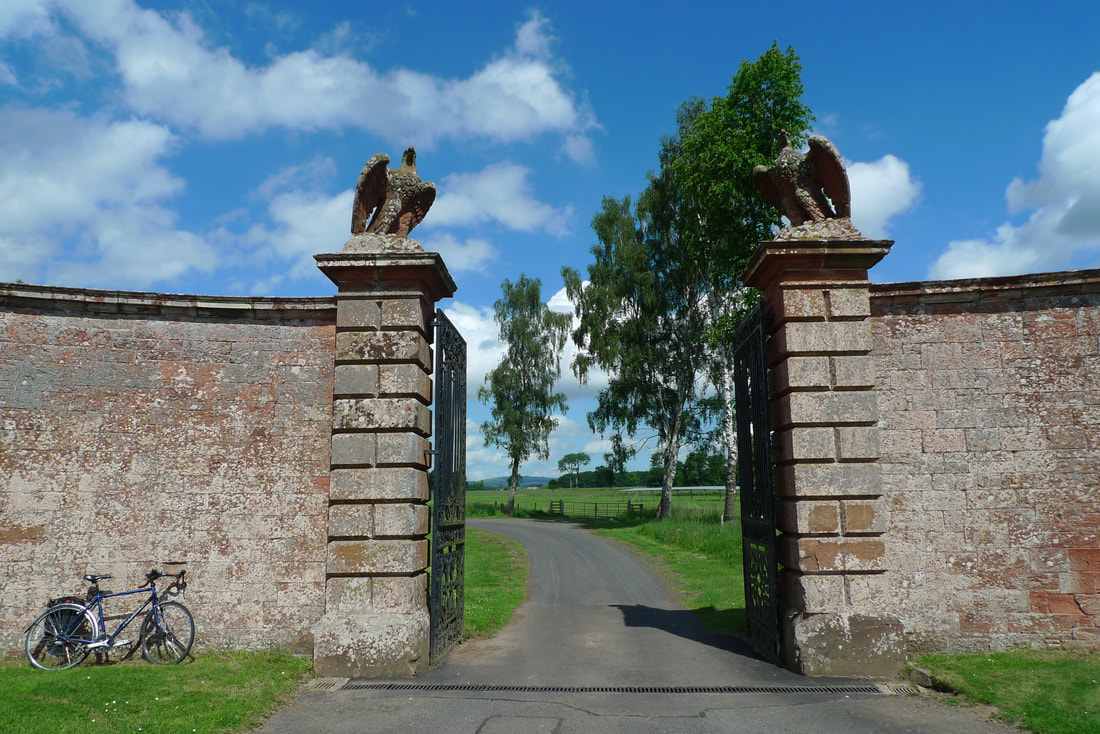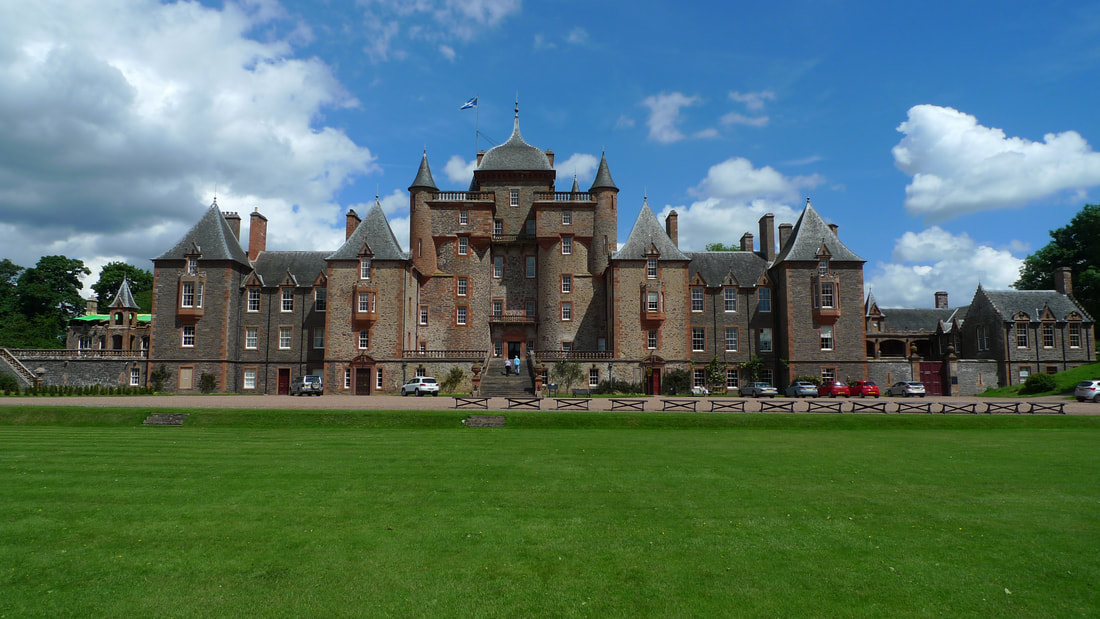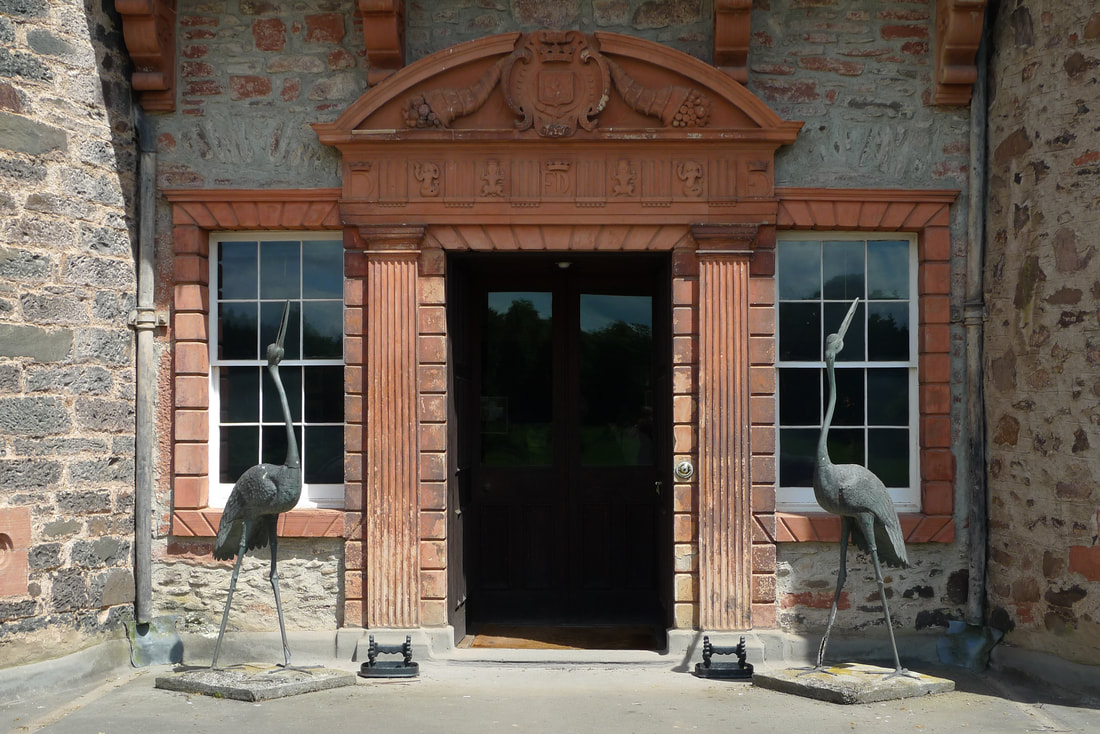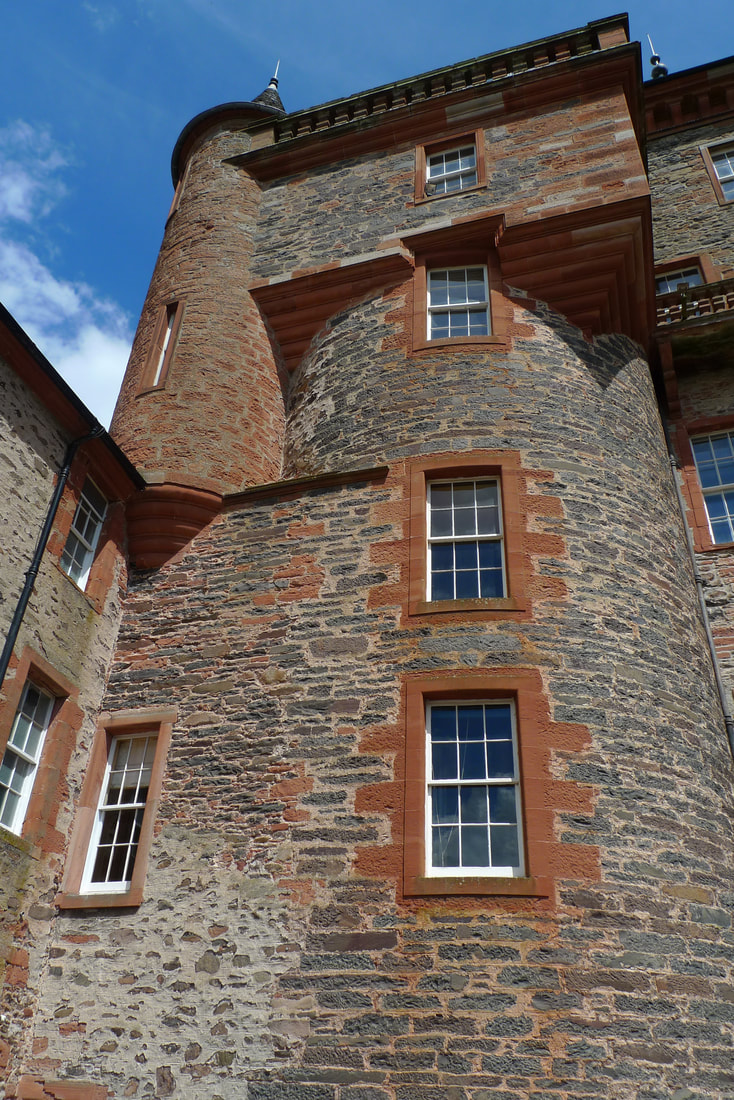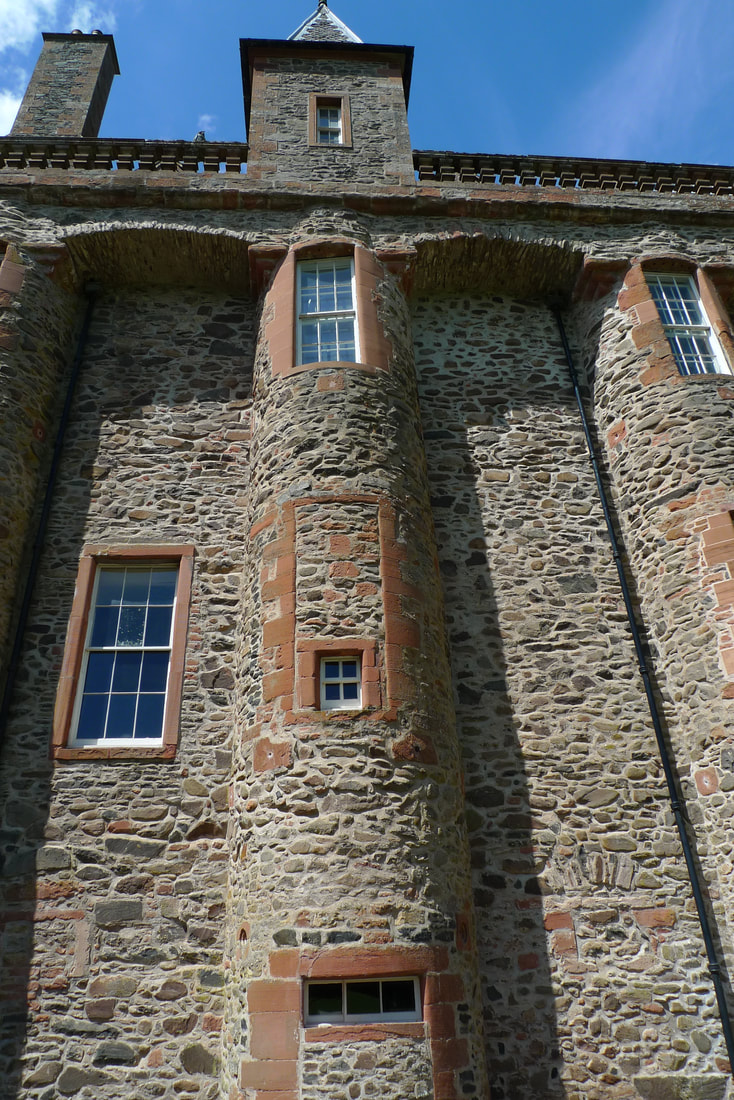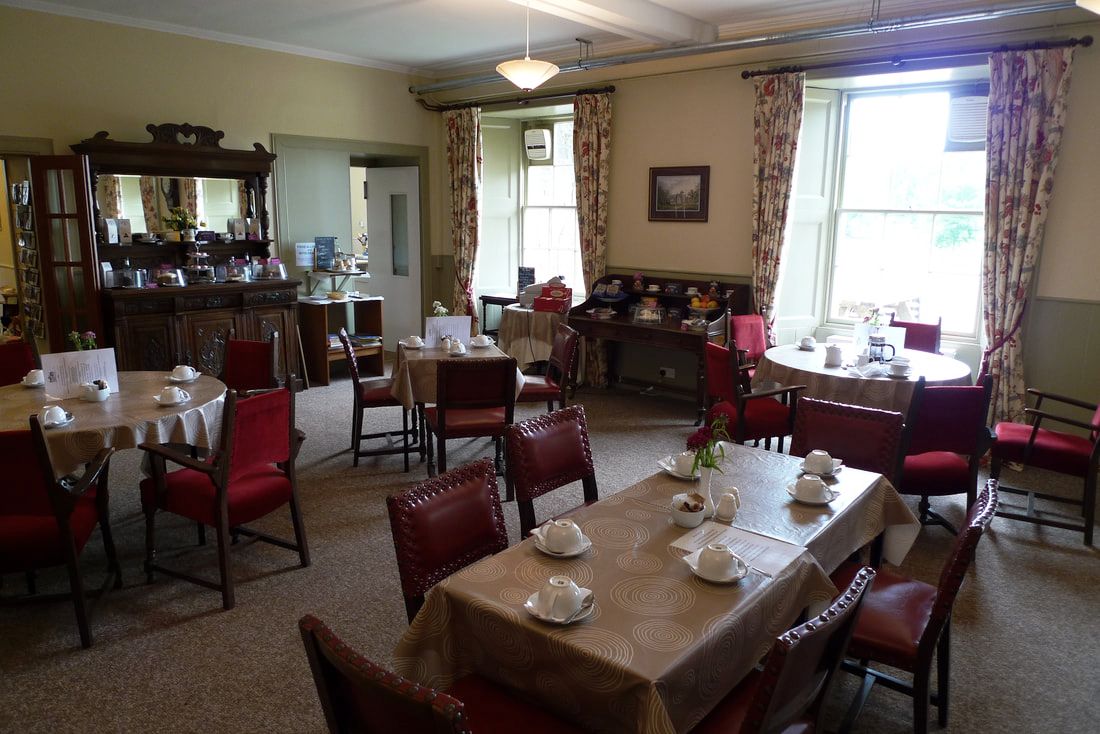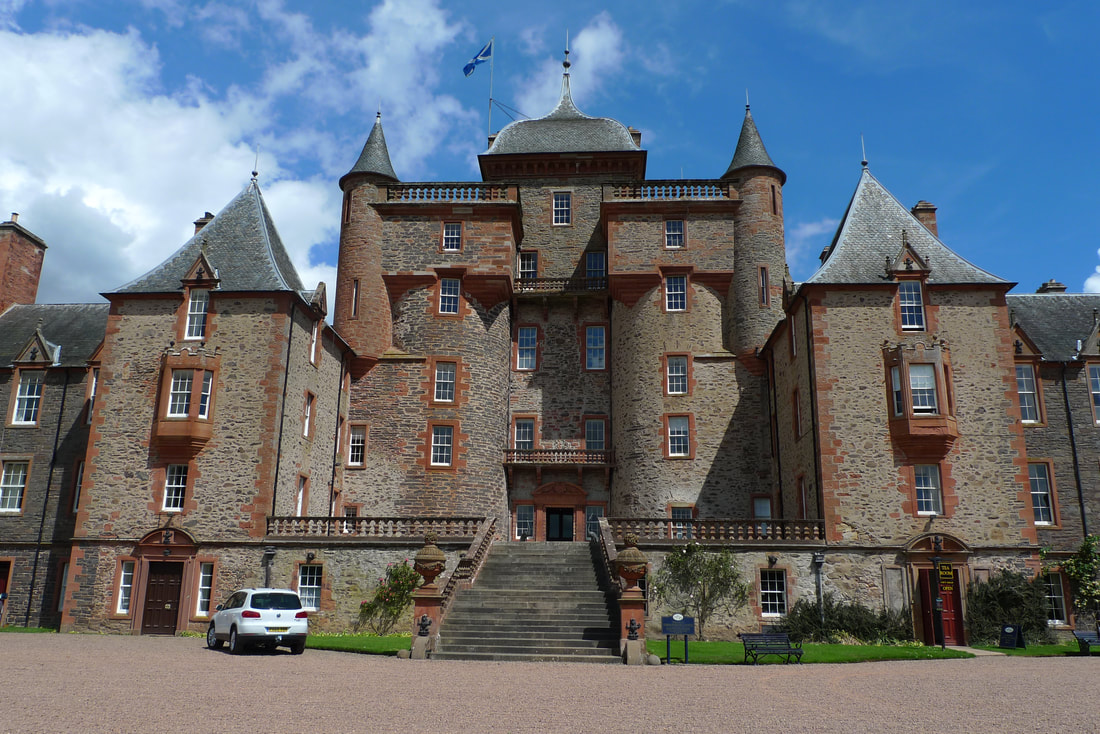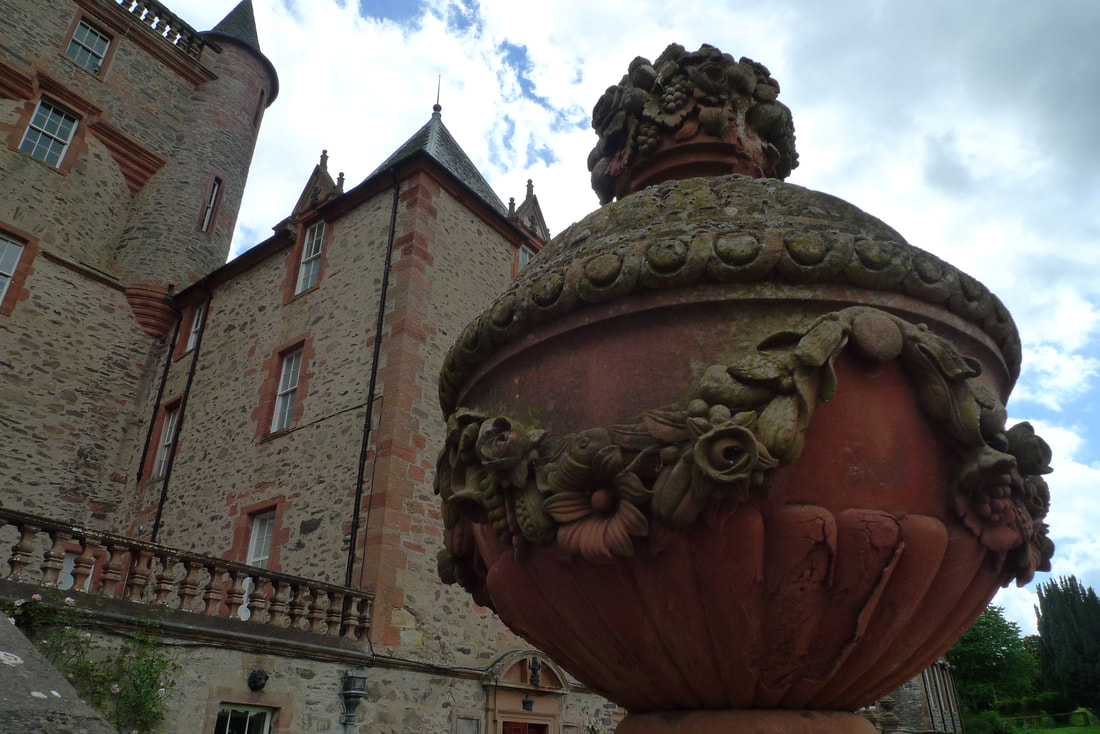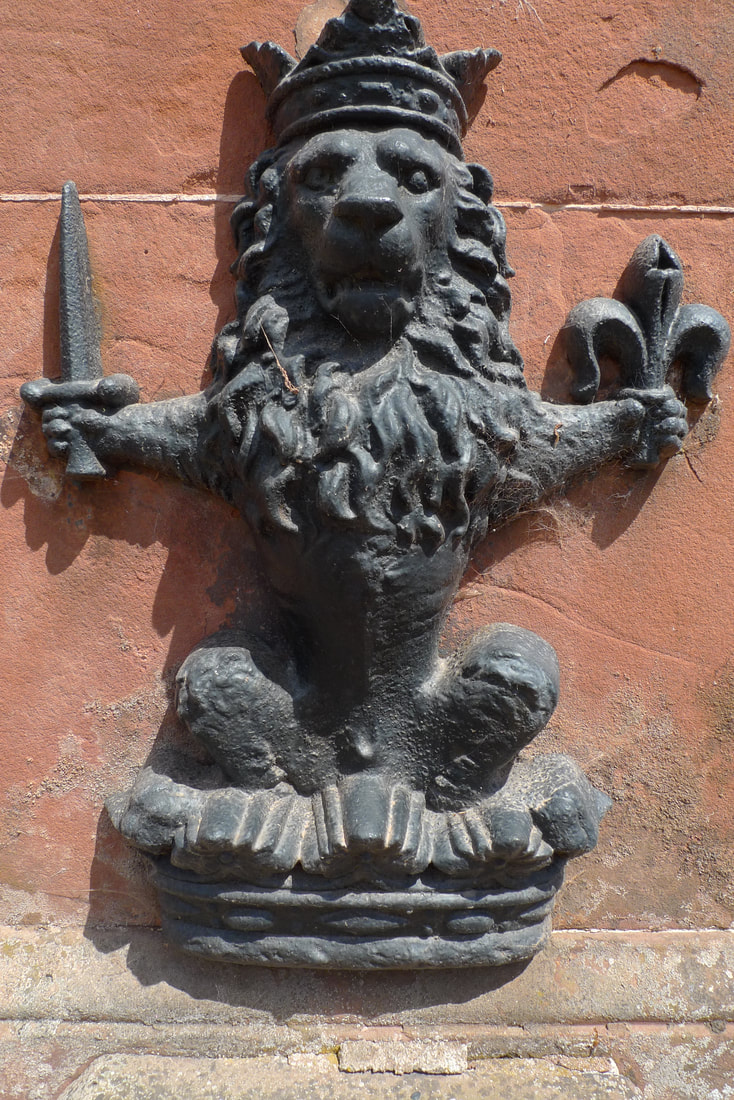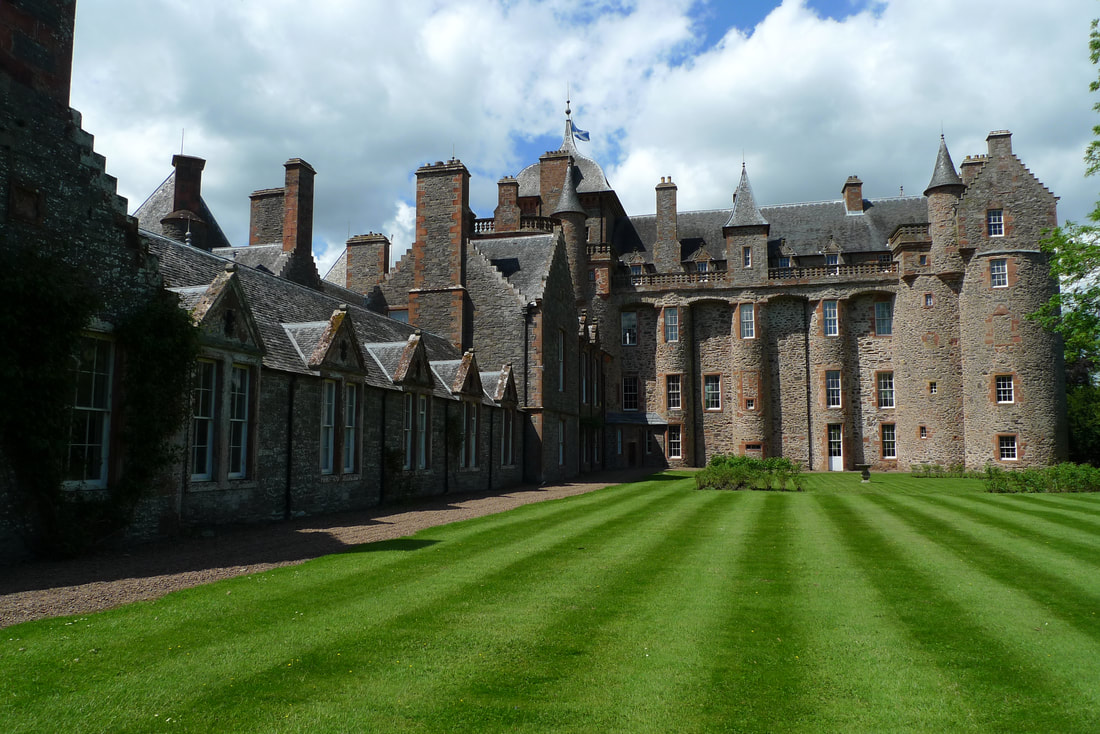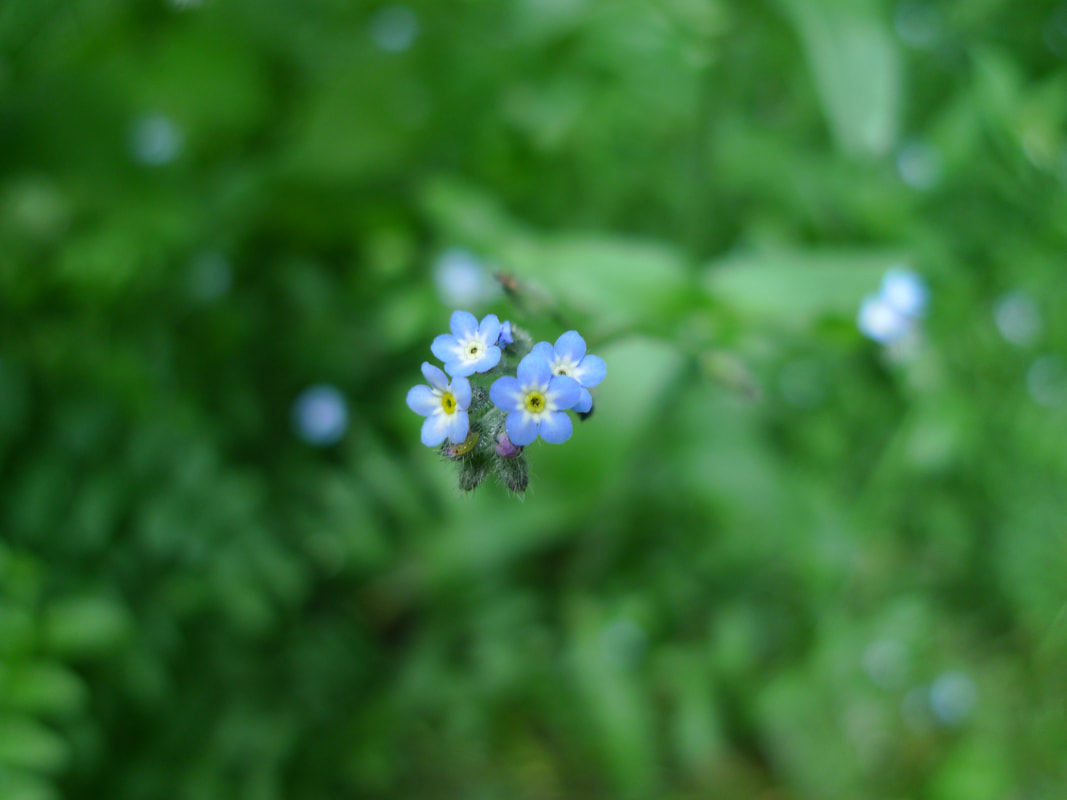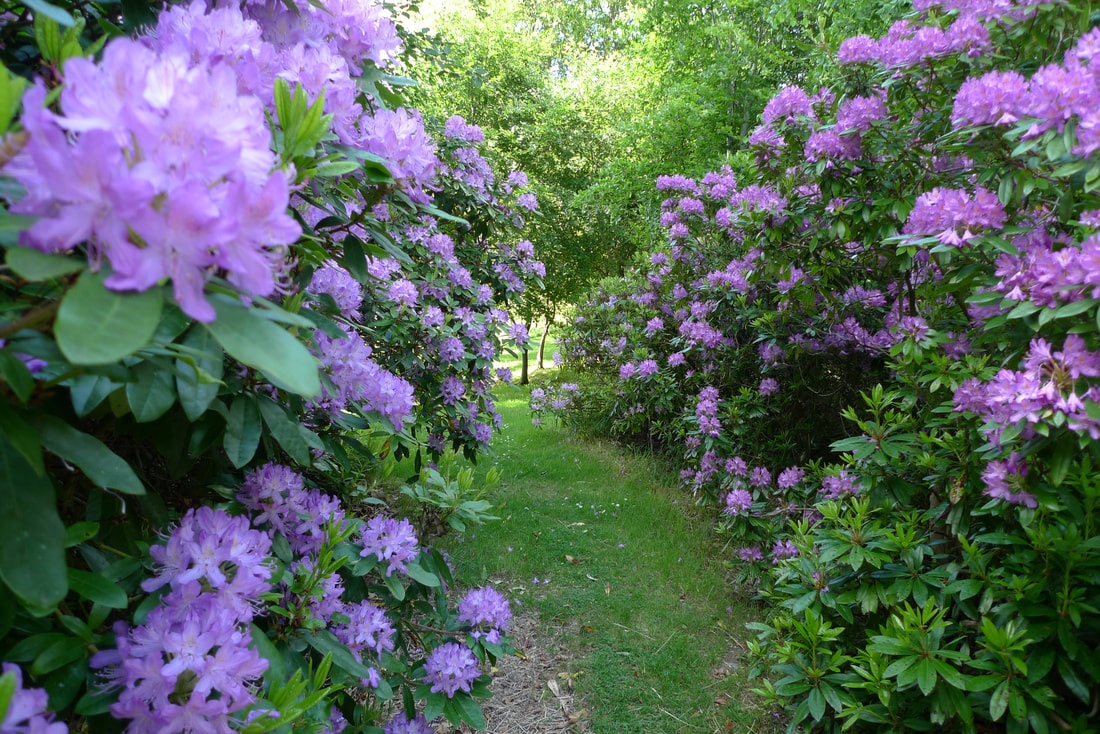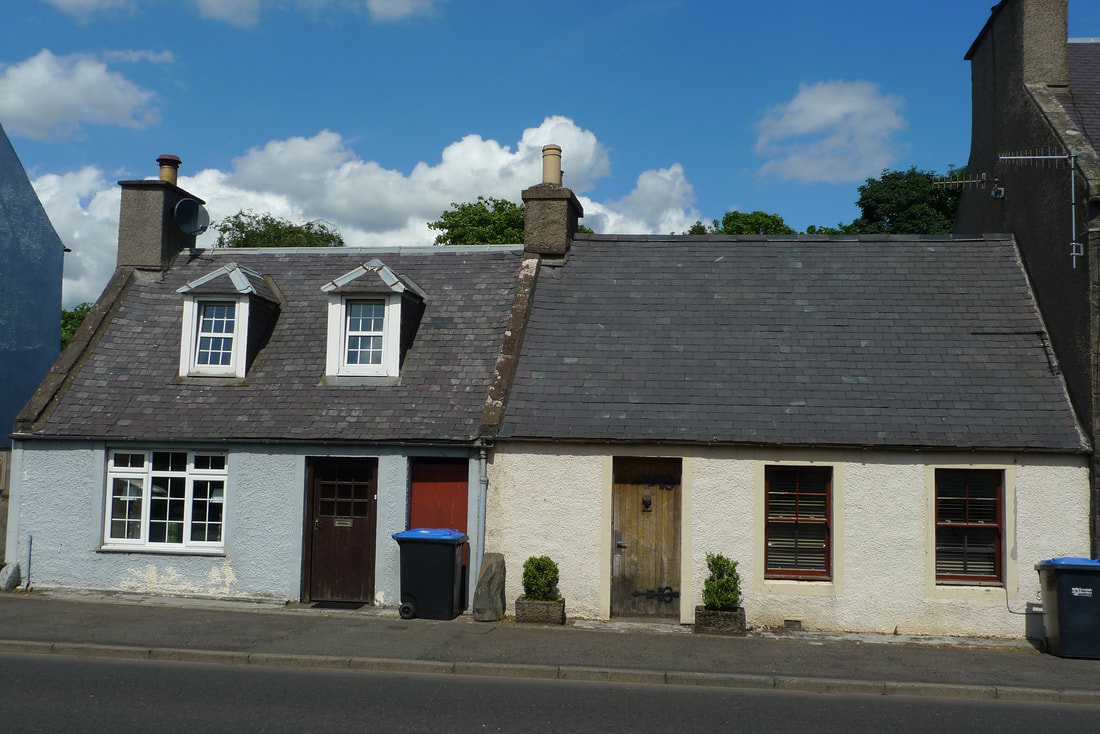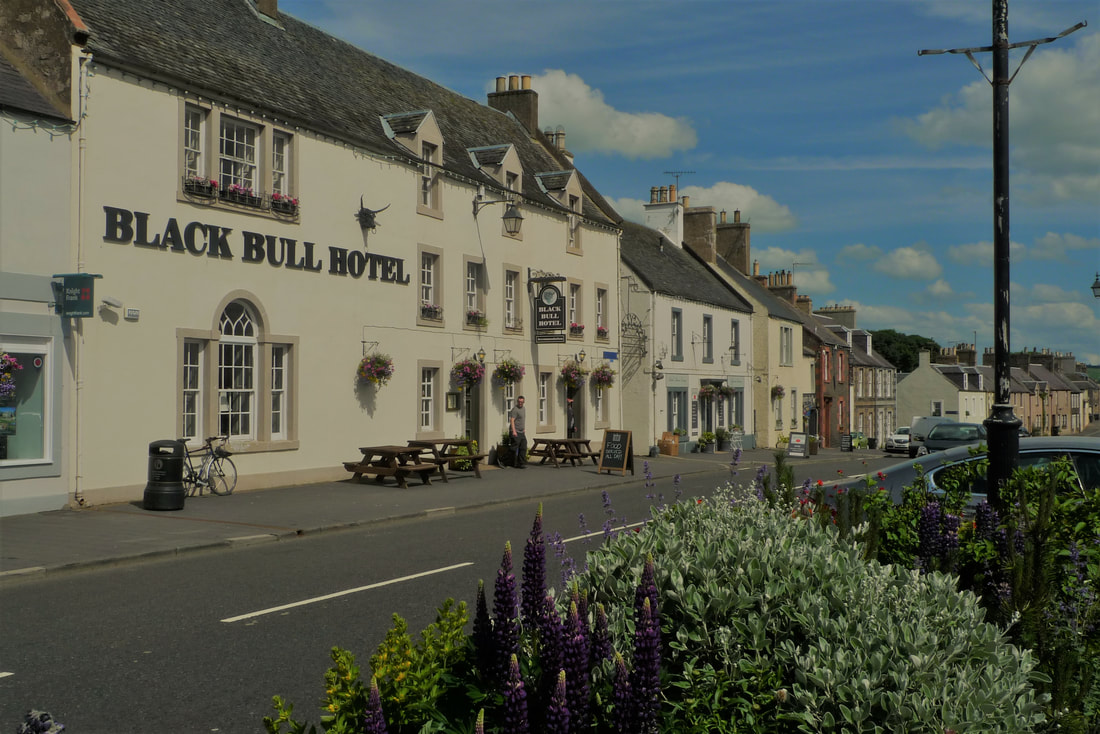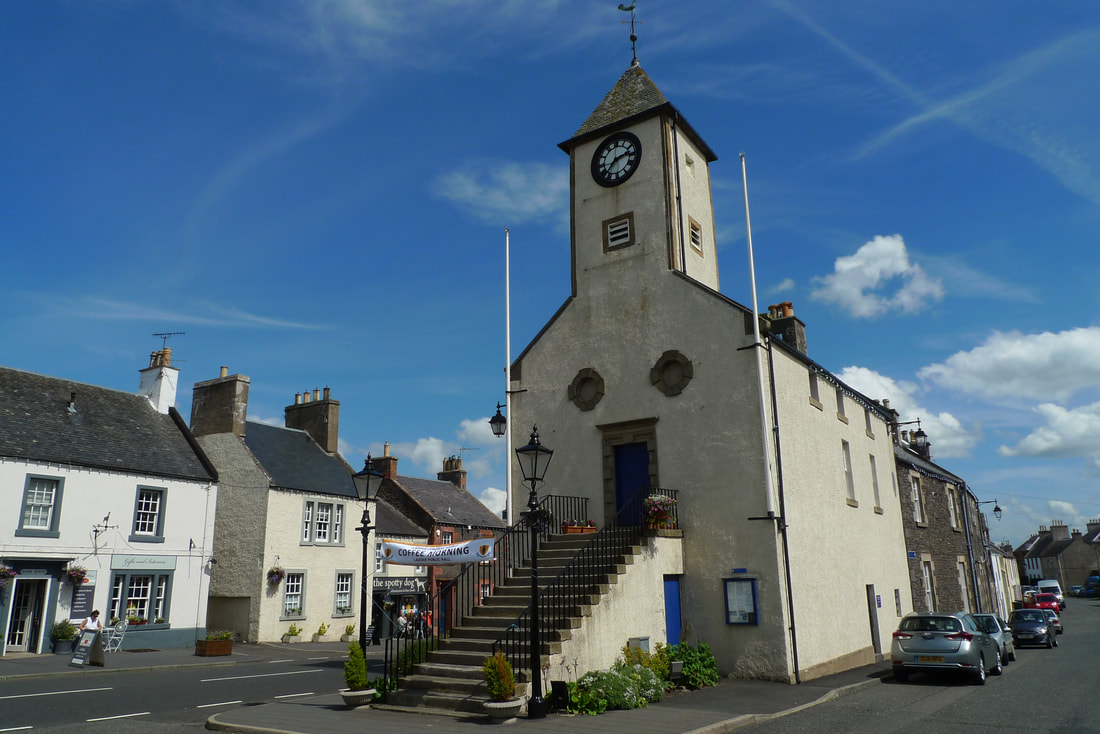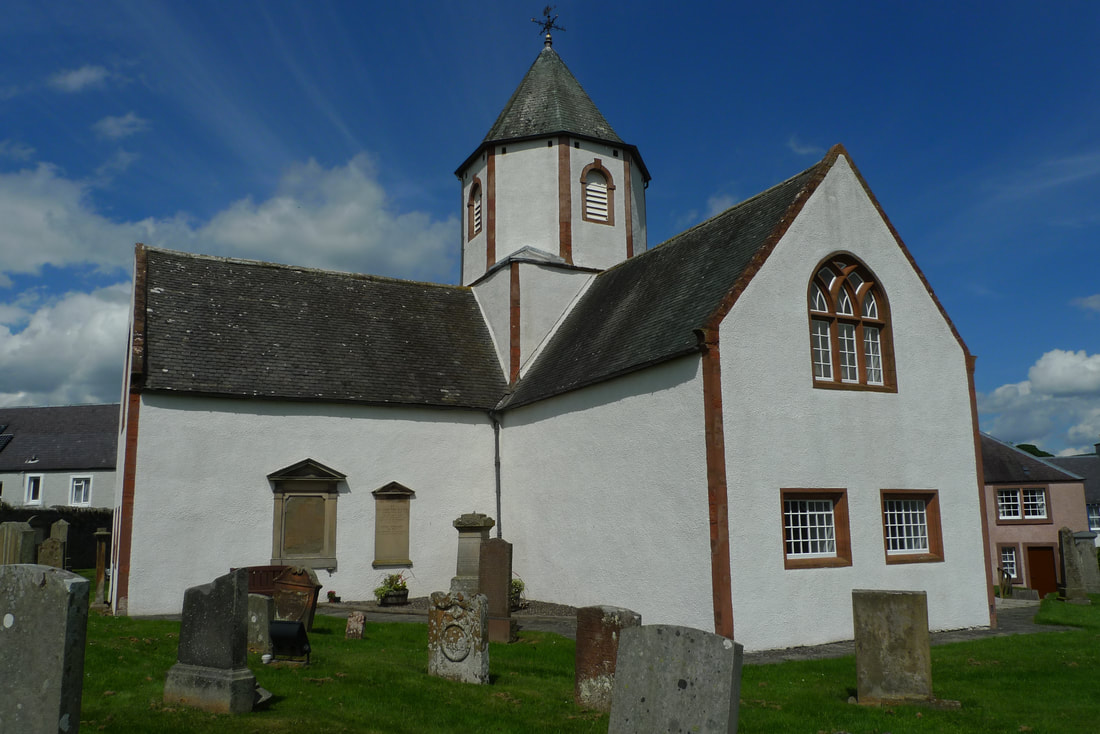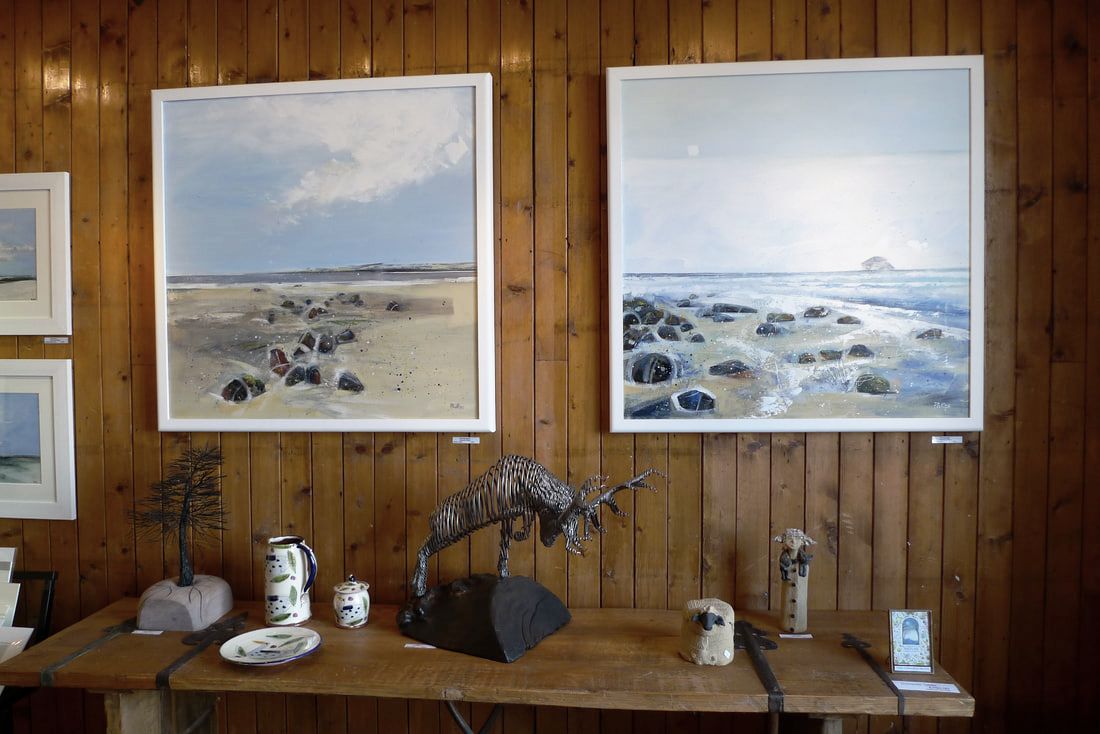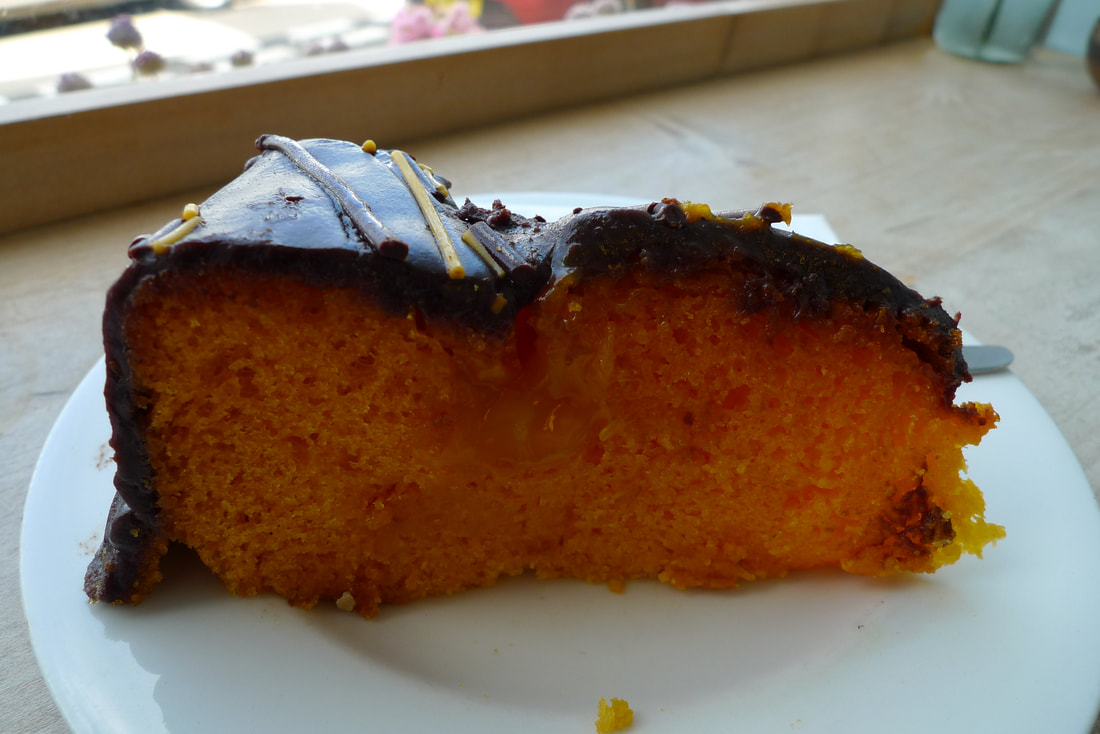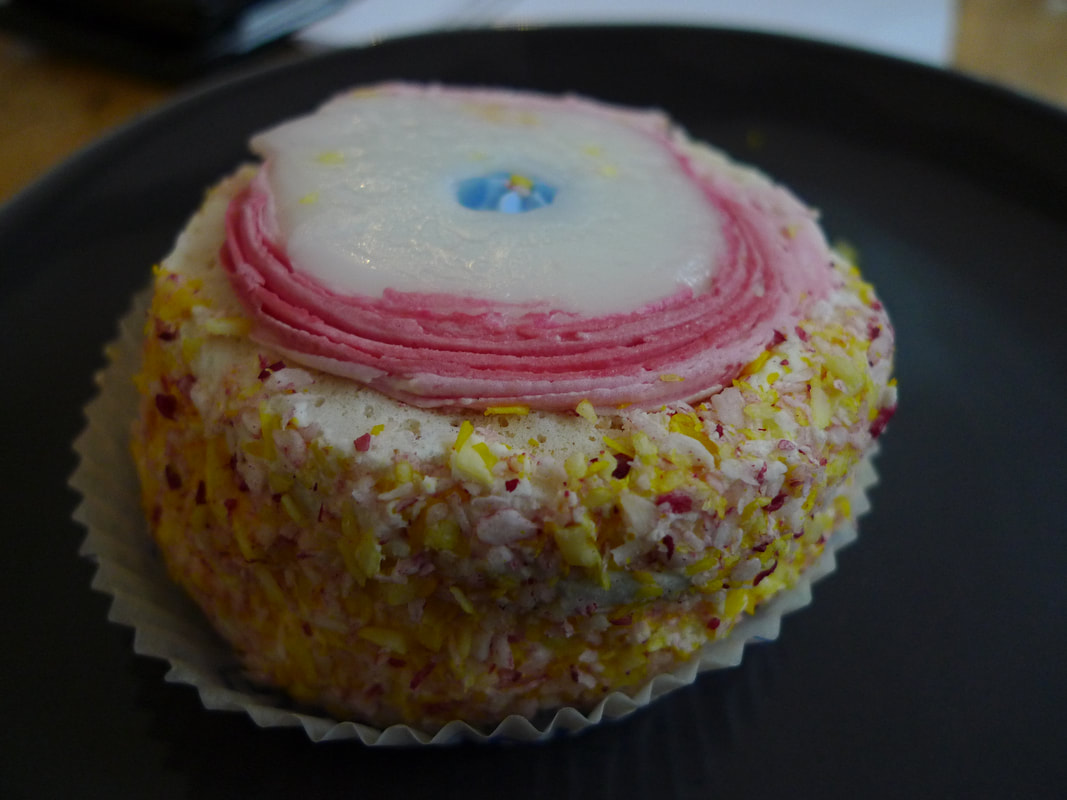|
Ceilings that will take your breath away. A room slept in by Bonnie Prince Charlie. One of the largest collections of family portraits in Scotland. A vintage toy collection. Home baking in a traditional tea room. This is the Thirlestane Castle experience. It is located on the outskirts of Lauder in the Scottish Borders. A 6 mile cycle from Stow station on the Borders Railway is the best way to reach the castle.
How to get there Take the Borders Railway from Edinburgh to Stow (45 minutes). The approach into Stow is one of the prettiest sections of this railway line with views of the Gala Water and the church, Saint Mary of Wedale, dominating the village. When I arrived nobody got off or on the train. This feels like a very rural place and yet it is only a short distance from the bustle of Edinburgh.
Stow's original 1848 station building survives. It is not currently in use, but I read of exciting plans to turn it into a bistro and cycle hire business.
Leaving the station you should cross the bridge that goes over the Gala Water.
As you make your way through the village it is impossible not to be charmed by it. Idyllic, tranquil, pretty- these are the sort of words that spring to mind. There is not much to see in the village. There is a Post Office and a cafe and that's about it.
To get to Thirlestane Castle you take the B6362. Beware! It begins with a 15% ascent as soon as you leave the village. The road curves upwards and enters woodland. It is a lot of work to reach the top, but you are rewarded with great views over Stow.
When the road levels off you are in a world of lush countryside. There are fields, copses of trees, undulating hills, livestock, birdsong and even Heather moor. This road is only about 5 miles, but has an incredible variety of scenery. It was also very quiet during my cycle with hardly any other road users. This turned out to be a perfect place to find solitude within a short train ride of Edinburgh.
I came across sheep walking on the road at one point:
The descent into Lauder was magnificent. I hardly used the pedals and just sat there and rolled along with the horizon of hills unfolding before me.
When you arrive into Lauder take a right turn along the high street which is also the A68. The castle is only 1 mile away, so although this is a main road you are not on it for very long and there is a pavement if you feel the road is too busy. During my visit the traffic was fairly light.
The gates into the castle grounds are guarded by a pair of proud stone eagles. The panorama of the castle is imposing. It makes you wonder what riches await inside.
The doorway into the castle appears more Georgian country house than medieval castle with its Doric pilasters and sash and cash windows. This reflects the many alterations and additions that the building has undergone.
Thirlestane can be dated back to the late sixteenth century when it was a fortified keep. In 1670 the 2nd Earl of Lauderdale's vision was for the castle to be turned into a palace- he employed the architect William Bruce to make this a reality. This explains the different architectural styles that you can see today.
Tearoom
After the hill climb to get here my first priority was to restore my energy levels. I ordered a Colombian filter coffee and raspberry and chocolate tray bake in the tea room. There was a gently ticking clock and show tunes on a radio. The wooden dresser had cakes stands with the names of the cakes handwritten on card. The windows looked out to the grounds where sheep strolled and ate grass. The woman working in the tearoom was impressed that I had cycled the hilly road. "Hat's off to you," she said and made the gesture of removing a hat. She had not thought of the Borders Railway opening up access to Lauder and Thirlestane Castle and said it was "clever" using train and bike to come here.
Explore the Castle
You tour the castle on your own, but there are guides in the rooms who have incredible knowledge about the place. Look out for the windows cut into the original keep walls. The thickness of these 13 foot walls is easily seen and it must have taken a lot of work to make these window holes. Chiming clocks was about the only sound inside the house. I loved the Billiards Room with its enormous windows to let the light flood in. There are lovely brass oil lamps that had been converted to electricity. The room has an unusual screen decorated with salmon flies that were probably used to catch fish on the River Tweed. On the theme of fish I read about a path across the Lammermuir Hills to Dunbar called Herring Road. It got its name because of an occasion where the Duke of Lauderdale ordered a messenger to collect herring for dinner. It was 50 miles by foot to Dunbar and the messenger made it back in time for dinner!
I passed through the library that had books on law, politics and religion. There was a massive family bible on a gilded stand, dated 1772.
I made my way up the spiral staircase that has more of those lovely gas lanterns that I spotted earlier in the Billiards Room. Thirlestane is the family home of the Maitlands who still occupy the castle today. John Maitland, 2nd Earl of Lauderdale was made a Duke by Charles II. There is a charter conferring this on the wall of the Duke's Room. He was the Secretary of State of Scotland, so the most influential man in Scotland at this time. This power is clearly in evidence when the Duke diverted labour from Holyrood Palace to work on his plaster ceilings. They took around 4 years to complete and date from around 1670. It is these ceilings in the upstairs rooms that are the standout feature of Thirlestane. In a room that had been used by Bonnie Prince Charlie in 1745 the ceiling features three dimensional foliage and lions that appear to gallop out of the roof.
My favourite room was the drawing room. The plaster work features musical instruments and 4 eagles. The guide in this room informed me that one of the eagles had previously fallen off, but was restored. He also showed me a wall panel that concealed a secret staircase.
In the Grand Bed Chamber there is 1870s wallpaper in perfect condition. The guide pointed out that it has traces of arsenic in it, a normal component of wallpaper from this era. "Don't rub your finger on it and lick it!"
The dinning room has one of the largest family portrait collections in Scotland. There was a curious object in this room- a Butler's Chair. This was used when someone was eating on their own and it did not make sense to use the huge dinning table. They could sit here and be served with a tray that slots into the chair. This room also has a ram's head snuff mill with a Cairngorm gemstone found only in Scotland.
The children's nursery rooms have wonderful toys from the Edwardian and Victorian era, including a Noah's Ark with individually carved wooden animals. Toys from this time were not mass produced and passed from generation to generation.
Gardens and Grounds
I was surprised at how small the grounds and gardens are compared to other grand houses. They are very pretty. There is a short woodland walk with wildflowers and birdsong.
A Stroll Around Lauder
Lauder is an attractive town with a long street lined with characterful cottages of different sizes and ages.
Soup and Art
I stopped in the Fat Cat Gallery thjat showcases the work of Scottish Borders artists. It's a great place to browse and there is also a cafe where I took the window seat that had a beautiful natural wood table. I ordered the carrot and courgette soup. It came with salad and crusty bread. I couldn't resist trying the chocolate and oranage jaffa cake. The food was delicious and the friendly ambiance made me want to linger. I leafed through some magazines and an interesting book about local history, Through Time and Place. It told an interesting WWII story when there was a call for people to lend their dogs to the army to use them as guard dogs at military prisons. The author had loaned his dog, Tweed, who was given a military serial number and he received regular written reports of how well Tweed was doing.
More Cake!
I went into the bakery and asked about one of the cakes. The baker said, "It's pure sugar! Are you in need?" Admittedly I wasn't, based on what I had already consumed in the course of this blog, but I would put it aside for tomorrow. "Macaroon, melt in the mouth." I can confirm that this was a very accurate description.
The return cycle to Stow meant the tough ascent, but once it leveled out the tranquil countryside was the most perfect place to ride a bike. The castle, the bike ride and the pretty town make for a brilliant day trip from Edinburgh.
There is an entry fee to Thirlestane Castle. Current charges and opening hours can be found on the castle website For more ideas of places to visit in the Scottish Borders visit my Borders page.
0 Comments
Leave a Reply. |
Categories
All
Archives
July 2024
|

